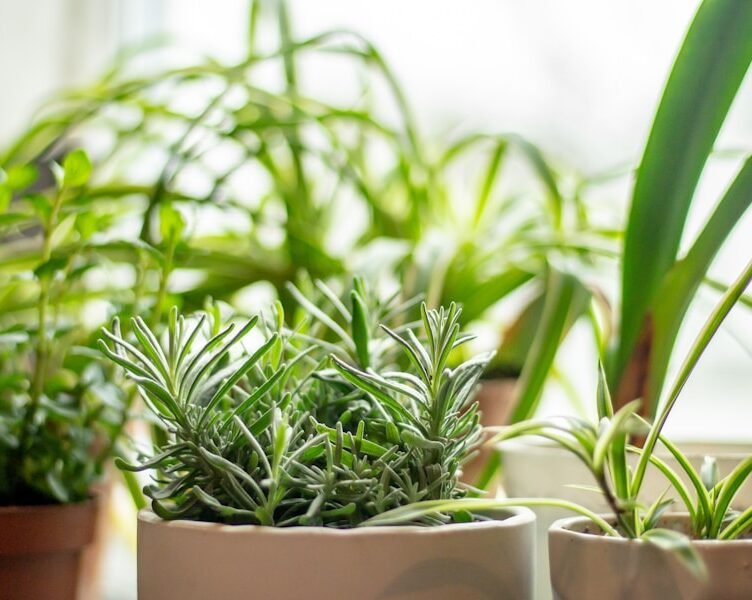When cultivating garlic indoors in containers, selecting the appropriate container is vital for the success of your garlic plants. The container should have a minimum depth of 8 inches to facilitate proper root development and feature drainage holes to prevent waterlogging. Furthermore, the container should be spacious enough to accommodate multiple garlic bulbs, with a minimum of 6 inches of space between each bulb.
Popular container options for indoor garlic cultivation include plastic or terracotta pots, wooden crates, and even repurposed materials such as buckets or barrels. When choosing a container, consider both its aesthetic appeal and functionality. It is essential to remember that garlic plants require sufficient space for their roots to grow, so select a container that provides ample room for the plants to thrive.
In addition to the size and material of the container, consider the location where you plan to grow your garlic. If you have limited space, you may want to opt for a vertical gardening system or hanging containers to maximize your growing area. Ultimately, the ideal container for growing garlic indoors will provide adequate space for root development, proper drainage, and a suitable location for your plants to receive sunlight.
Key Takeaways
- Choose a container that is at least 8 inches deep and has good drainage for growing garlic indoors.
- Opt for smaller garlic varieties such as Rocambole or Purple Stripe for indoor container gardening.
- Use well-draining soil and plant garlic cloves with the pointed end facing up in the container.
- Water garlic plants regularly, provide adequate sunlight, and fertilize every few weeks for healthy growth.
- Keep an eye out for pests like aphids and diseases like white rot, and harvest garlic when the tops begin to yellow and fall over.
Selecting the Best Garlic Varieties for Indoor Container Gardening
When it comes to selecting the best garlic varieties for indoor container gardening, there are a few factors to consider. First and foremost, choose a variety that is well-suited for growing in containers and has a compact growth habit. Some popular garlic varieties for indoor container gardening include Inchelium Red, Purple Glazer, and Early Italian.
These varieties are known for their adaptability to container growing and produce flavorful bulbs that are well-suited for culinary use. In addition to considering the growth habit of the garlic variety, take into account the climate in which you will be growing your garlic. Some varieties are better suited for warmer climates, while others thrive in cooler temperatures.
For example, softneck garlic varieties are well-suited for mild climates, while hardneck varieties are better suited for colder regions. Ultimately, the best garlic varieties for indoor container gardening are those that are well-adapted to container growing, produce flavorful bulbs, and are well-suited for the climate in which they will be grown. By selecting the right garlic variety, you can ensure a successful harvest of flavorful garlic bulbs from your indoor container garden.
Preparing the Soil and Planting Garlic Bulbs in Containers
Preparing the soil and planting garlic bulbs in containers is a crucial step in the process of growing garlic indoors. Start by selecting a high-quality potting mix that is well-draining and rich in organic matter. Avoid using garden soil, as it may contain pests or diseases that can harm your garlic plants.
Fill the container with the potting mix, leaving a few inches of space at the top to allow for watering. Next, it’s time to plant the garlic bulbs. Break apart the bulbs into individual cloves, being careful to keep the papery skin intact.
Plant each clove with the pointed end facing up and the flat end down, about 2 inches deep and 4-6 inches apart. Water the soil thoroughly after planting to ensure that the cloves are well-settled in the soil. After planting, place the container in a sunny location where it will receive at least 6-8 hours of sunlight per day.
If you are growing garlic indoors during the winter months, consider using grow lights to supplement natural sunlight. With proper soil preparation and planting techniques, you can ensure that your garlic bulbs have the best possible start in their new container home.
Caring for Indoor Garlic Plants: Watering, Fertilizing, and Sunlight
| Garlic Variety | Container Size | Soil Type | Watering | Light |
|---|---|---|---|---|
| Hardneck | 12-inch pot | Well-draining soil | Regularly, keep soil moist but not waterlogged | 6-8 hours of sunlight per day |
| Softneck | 10-inch pot | Loamy soil | Water when top inch of soil is dry | 4-6 hours of sunlight per day |
Caring for indoor garlic plants involves providing them with adequate water, nutrients, and sunlight to support their growth and development. When it comes to watering garlic plants in containers, it’s important to keep the soil consistently moist but not waterlogged. Water the plants when the top inch of soil feels dry to the touch, and be sure to water at the base of the plants to avoid wetting the foliage.
In addition to proper watering, indoor garlic plants will benefit from regular fertilization to support their growth. Use a balanced fertilizer with equal parts nitrogen, phosphorus, and potassium to provide essential nutrients for your garlic plants. Apply the fertilizer according to the manufacturer’s instructions, being careful not to over-fertilize as this can lead to excessive foliage growth at the expense of bulb development.
Finally, ensure that your indoor garlic plants receive adequate sunlight to support their growth and development. Place the containers in a sunny location where they will receive at least 6-8 hours of sunlight per day. If natural sunlight is limited, consider using grow lights to supplement light levels.
By providing your indoor garlic plants with proper care in terms of water, nutrients, and sunlight, you can ensure that they thrive and produce flavorful bulbs.
Managing Pests and Diseases in Indoor Garlic Gardens
While growing garlic indoors in containers can help protect your plants from many pests and diseases, it’s still important to be vigilant and take steps to prevent potential issues. Common pests that may affect indoor garlic plants include aphids, thrips, and spider mites. To manage these pests, regularly inspect your plants for signs of infestation and use insecticidal soap or neem oil as a natural remedy.
In addition to pests, indoor garlic plants may also be susceptible to diseases such as white rot, rust, and fusarium wilt. To prevent these diseases from affecting your plants, practice good sanitation by removing any infected plant material and avoiding overhead watering which can promote disease spread. Additionally, consider using disease-resistant garlic varieties when planting your indoor garden.
By being proactive in managing pests and diseases in your indoor garlic garden, you can help ensure that your plants remain healthy and productive throughout their growing season. Regular monitoring and prompt action can help prevent potential issues from affecting your garlic plants and allow you to enjoy a bountiful harvest of flavorful bulbs.
Harvesting and Storing Garlic Grown in Containers
Harvesting garlic grown in containers is an exciting culmination of all your hard work throughout the growing season. As your garlic plants mature, you’ll notice that the foliage begins to turn yellow and dry out. This is a sign that the bulbs are ready to be harvested.
Use a garden fork or trowel to carefully loosen the soil around each bulb before gently lifting them from the container. After harvesting, it’s important to cure your garlic bulbs before storing them. Lay the bulbs out in a single layer in a warm, dry location with good air circulation for 2-3 weeks.
Once cured, trim off the roots and foliage before storing the bulbs in a cool, dry place such as a pantry or cellar. Properly cured and stored garlic can last for several months, allowing you to enjoy your homegrown harvest well into the future. By following proper harvesting and storing techniques, you can ensure that your homegrown garlic remains flavorful and fresh for an extended period of time.
With a little patience and attention to detail, you can enjoy the fruits of your labor long after your indoor garlic plants have finished their growing season.
Tips for Success: Troubleshooting Common Issues in Indoor Garlic Gardening
While growing garlic indoors in containers can be a rewarding experience, it’s not without its challenges. Common issues that may arise when growing garlic indoors include yellowing foliage, stunted growth, or small bulbs. To troubleshoot these issues, consider factors such as watering frequency, nutrient deficiencies, or inadequate sunlight.
If you notice yellowing foliage on your indoor garlic plants, it may be a sign of overwatering or nutrient deficiencies. Adjust your watering schedule to allow the soil to dry out slightly between waterings and consider applying a balanced fertilizer to provide essential nutrients for your plants. Additionally, ensure that your plants are receiving adequate sunlight to support their growth and development.
In some cases, stunted growth or small bulbs may be caused by overcrowding in the container or inadequate soil fertility. Thin out any overcrowded plants to provide more space for remaining bulbs to grow and develop properly. Additionally, consider amending the soil with organic matter such as compost or aged manure to improve its fertility and support healthy plant growth.
By troubleshooting common issues in indoor garlic gardening and making adjustments as needed, you can help ensure that your plants thrive and produce flavorful bulbs. With a little attention to detail and proactive problem-solving, you can overcome challenges and enjoy a successful harvest from your indoor garlic garden. In conclusion, growing garlic indoors in containers is a rewarding way to enjoy homegrown garlic year-round.
By choosing the right container, selecting suitable garlic varieties, preparing the soil and planting cloves properly, providing proper care in terms of water, nutrients, and sunlight, managing pests and diseases effectively, harvesting and storing bulbs correctly, and troubleshooting common issues as they arise – you can ensure a successful indoor garlic gardening experience. With a little patience and attention to detail, you can enjoy a bountiful harvest of flavorful homegrown garlic from your indoor container garden.
FAQs
What are the benefits of growing garlic indoors in containers?
Growing garlic indoors in containers allows you to have a fresh supply of garlic year-round, regardless of the outdoor climate. It also saves space and is convenient for those with limited outdoor gardening space.
What type of container is best for growing garlic indoors?
A deep container with good drainage is best for growing garlic indoors. This allows the garlic bulbs to develop properly and prevents waterlogging.
What type of soil should be used for growing garlic indoors in containers?
A well-draining potting mix with added compost or organic matter is ideal for growing garlic indoors in containers. This will provide the necessary nutrients for the garlic to grow.
How much sunlight does garlic need when grown indoors in containers?
Garlic requires at least 6-8 hours of direct sunlight per day when grown indoors in containers. Placing the containers near a sunny window or using grow lights can help provide adequate light.
How often should garlic be watered when grown indoors in containers?
Garlic should be watered regularly, keeping the soil evenly moist but not waterlogged. It is important to allow the soil to dry out slightly between waterings to prevent rot.
Can garlic be grown indoors in containers year-round?
Yes, garlic can be grown indoors in containers year-round, as long as it receives the necessary sunlight, water, and nutrients. This allows for a continuous supply of fresh garlic.






